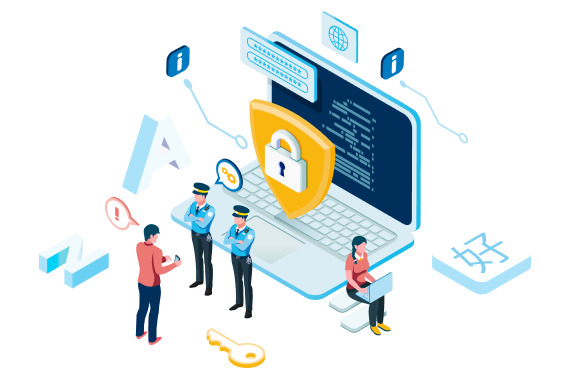The hidden risks of online tools ? and how to regain control of your sensitive content.
In an increasingly interconnected world, machine translation (MT) has become an everyday tool for businesses. Global teams rely on it to communicate across languages quickly and efficiently. But are your translation practices secure and compliant? As regulations tighten and cyber threats grow, it?s time to ask a serious question:
Do you really control what happens to your sensitive data when it’s being translated?
Machine Translation: A Hidden Security Risk?
It?s easy to overlook machine translation as a potential security vulnerability. After all, translating a paragraph or document seems like a low-risk action. But when done through public, cloud-based services like Google Translate, Microsoft Translator, or DeepL, sensitive content might be exposed to:
- Foreign jurisdictions (e.g., the US CLOUD Act, FISA 702)
- Data harvesting for AI model training
- Storage without clear consent
- Uncontrolled reuse of your content
Even when hosted on EU-based servers, cloud providers may still be subject to extraterritorial laws that allow foreign authorities to access your data ? often without your knowledge.
Real-World Consequences: Espionage and Data Leaks
These aren’t theoretical risks. Recent incidents show what?s at stake:
- Industrial Espionage (2023): A former General Electric engineer was convicted of attempting to steal jet engine trade secrets, potentially using unsecured digital channels.
- Major Data Breach (2024): A European automotive supplier saw confidential EV project data leaked due to the use of a non-compliant machine translation service.
In both cases, poor control over data translation workflows contributed to the breach ? costing millions in damages and long-term reputational impact.
Regulation is Getting Stricter ? Everywhere
Governments and regulators are responding to these growing threats:
- EU Data Act (2024): Requires organizations to know where and how their sensitive data is processed, especially across borders. (https://commission.europa.eu/news/data-act-enters-force-what-it-means-you-2024-01-11)
- AI Act (2024): Categorizes advanced machine translation as a high-risk AI application. Compliance now includes proving data flow control and risk evaluation. (https://www.europarl.europa.eu/topics/en/article/20230601STO93804/eu-ai-act-first-regulation-on-artificial-intelligence)
- Global Data Privacy Laws (GDPR, CCPA, PDPA?): Non-compliance can result in heavy fines and loss of trust.
Companies ignoring translation governance may face penalties of up to 4% of global annual revenue ? similar to data breach fines.
4 Key Areas to Audit in Your Translation Practices
- Usage Mapping: Who uses translation tools? For what kind of data? Where?
- Data Handling & Storage: Are the tools cloud-based? Who owns the infrastructure? Are there certifications like ISO27001 or local equivalents?
- Compliance & Legal Exposure: Are you following GDPR, the AI Act, and other regional requirements?
- Shadow IT: Are employees using unauthorized translation tools (e.g., copy-pasting into Google Translate)? If so, your exposure is likely worse than you think.
Best Practices for Secure, Compliant Machine Translation
- Use a Sovereign or On-Prem MT Solution: Choose providers that offer full control over where and how data is processed ? ideally within your jurisdiction.
- Ensure No Data Storage or Reuse: Opt for solutions that do not retain or use your data for AI model training.
- Conduct Regular Audits: Review your translation processes and tools to align with updated regulations.
- Train Your Teams: Awareness is key ? most risks arise from employees using the wrong tools out of habit or convenience.
Data Sovereignty Isn?t a Burden ? It?s a Competitive Advantage
Managing your translation process securely isn?t just about avoiding fines. It?s a chance to:
- Build trust with partners and regulators
- Protect your intellectual property and trade secrets
- Strengthen your cyber resilience
- Lead your market as a data-conscious, globally compliant brand
Act Now to Secure Your Translation Workflows
In today?s regulatory and threat landscape, all employees and more particularly compliance officers, CISOs, and digital leaders must work together to assess and control how translation is handled across the organization.
Start with an audit. Identify the gaps. Replace risky practices.
Transform translation security into a cornerstone of your broader data governance strategy.





